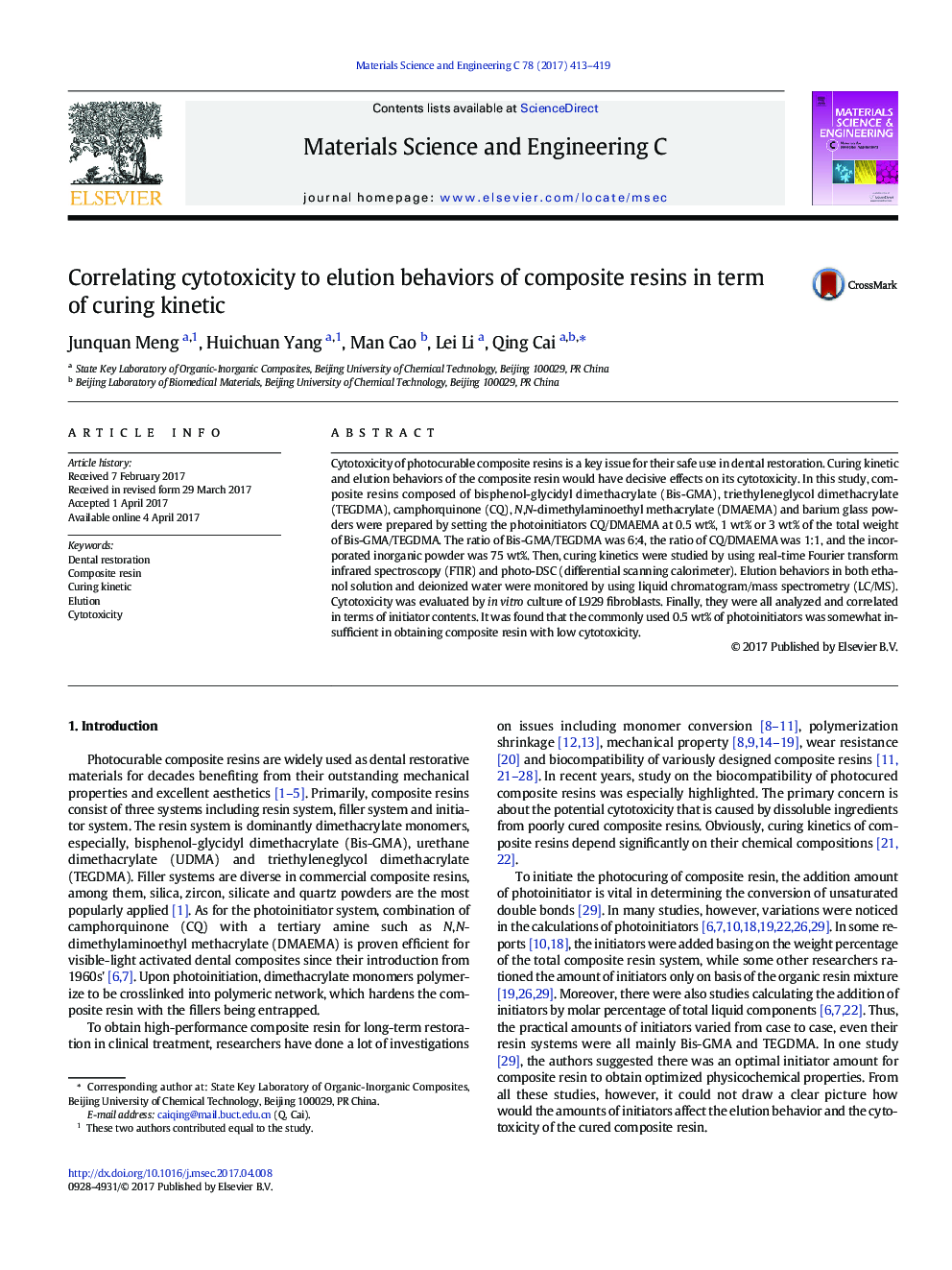| Article ID | Journal | Published Year | Pages | File Type |
|---|---|---|---|---|
| 5434431 | Materials Science and Engineering: C | 2017 | 7 Pages |
â¢Curing kinetics of photocurable composite resins were studied in relating to photoinitiator content.â¢Elution behaviors of composite resins were determined in relating to their curing kinetic.â¢Cytotoxicity of composite resins was evaluated in relating to their elution behaviors.
Cytotoxicity of photocurable composite resins is a key issue for their safe use in dental restoration. Curing kinetic and elution behaviors of the composite resin would have decisive effects on its cytotoxicity. In this study, composite resins composed of bisphenol-glycidyl dimethacrylate (Bis-GMA), triethyleneglycol dimethacrylate (TEGDMA), camphorquinone (CQ), N,N-dimethylaminoethyl methacrylate (DMAEMA) and barium glass powders were prepared by setting the photoinitiators CQ/DMAEMA at 0.5Â wt%, 1Â wt% or 3Â wt% of the total weight of Bis-GMA/TEGDMA. The ratio of Bis-GMA/TEGDMA was 6:4, the ratio of CQ/DMAEMA was 1:1, and the incorporated inorganic powder was 75Â wt%. Then, curing kinetics were studied by using real-time Fourier transform infrared spectroscopy (FTIR) and photo-DSC (differential scanning calorimeter). Elution behaviors in both ethanol solution and deionized water were monitored by using liquid chromatogram/mass spectrometry (LC/MS). Cytotoxicity was evaluated by in vitro culture of L929 fibroblasts. Finally, they were all analyzed and correlated in terms of initiator contents. It was found that the commonly used 0.5Â wt% of photoinitiators was somewhat insufficient in obtaining composite resin with low cytotoxicity.
